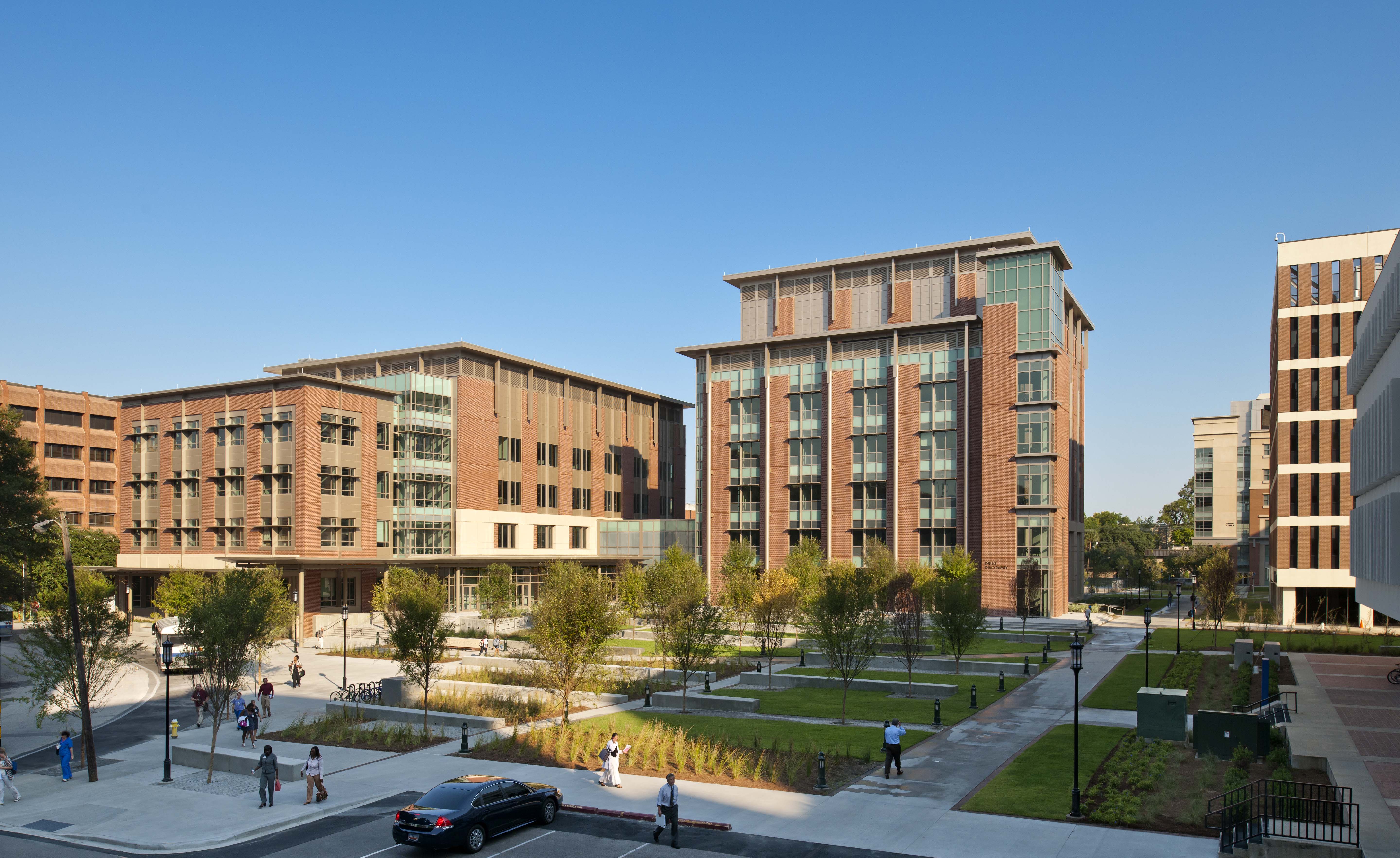Wayne J. Griffin Electric, Inc. recently completed the electrical installation work for the Medical University of South Carolina’s Drug Discovery and Bioengineering buildings in Charleston, S.C.
Officially named the James E. Clyburn Research Center on October 21, the 210,000-sf complex is comprised of two buildings, and houses research, teaching and office areas, plus conference spaces for the University. Research for pharmacology, pharmaceutical sciences, tissue regeneration, bioengineering, and cancer is performed on-site, including a dedicated animal imaging center for CT, PET, and MRI optical imaging.
Griffin Electric performed the installation of a 15KV service and switches, as well as, a switchboard and standby generator for this project.
Also, the team was responsible for setting up the buildings’ life safety fire alarm and advanced energy management lighting control systems.
Brasfield & Gorrie, LLC, of Atlanta, GA, led the construction team, while Stevens & Wilkinson SC, Inc., of Columbia, SC, performed the architectural and electrical design services. BD+C
Related Stories
| Oct 11, 2011
ThyssenKrupp elevator cabs validated by UL Environment
The conclusive and independent third-party validation process is another step toward a green product line.
| Oct 11, 2011
Ballard Spahr launches real estate recovery group
The new group represents an expansion of the company’s Distressed Real Estate Initiative, which was launched in 2008 to help clients throughout the country plan, adapt and prosper in a challenging economic environment.
| Oct 11, 2011
Onex completes investment in JELD-WEN
With the completion of the JELD-WEN investment, Onex Partners III is approximately 40% invested.
| Oct 7, 2011
GREENBUILD 2011: Demand response partnership program announced at Greenbuild 2011
Program will use USGBC’s newly revised LEED Demand Response credit as an implementation guideline and leverage its relationships with the building community to foster adoption and participation in existing utility and solution provider demand response offerings.
| Oct 7, 2011
GREENBUILD 2011: Otis Elevator announces new contracts for sustainable building projects
Wins reinforce Otis’ position as leader in energy-efficient products.
| Oct 7, 2011
GREENBUILD 2011: UL Environment releases industry-wide sustainability requirements for doors
ASSA ABLOY Trio-E door is the first to be certified to these sustainability requirements.
| Oct 7, 2011
GREENBUILD 2011: UL Environment clarifies emerging environmental product declaration field
White paper defines EPD, details development process, and identifies emerging trends for manufacturers, architects, designers, and buyers.
| Oct 7, 2011
GREENBUILD 2011: Otis Elevator introduces energy-efficient escalator
The energy-efficient NCE escalator from Otis offers customers substantial “green” benefits.
| Oct 7, 2011
GREENBUILD 2011: Schools program receives grant to track student conservation results
To track results, schools will use the newly developed Sustainability Dashboard, a unique web-based service that makes tracking sustainability initiatives affordable and easy.
| Oct 7, 2011
GREENBUILD 2011: Transparent concrete makes its North American debut at Greenbuild
The panels allow interior lights to filter through, from inside.

















